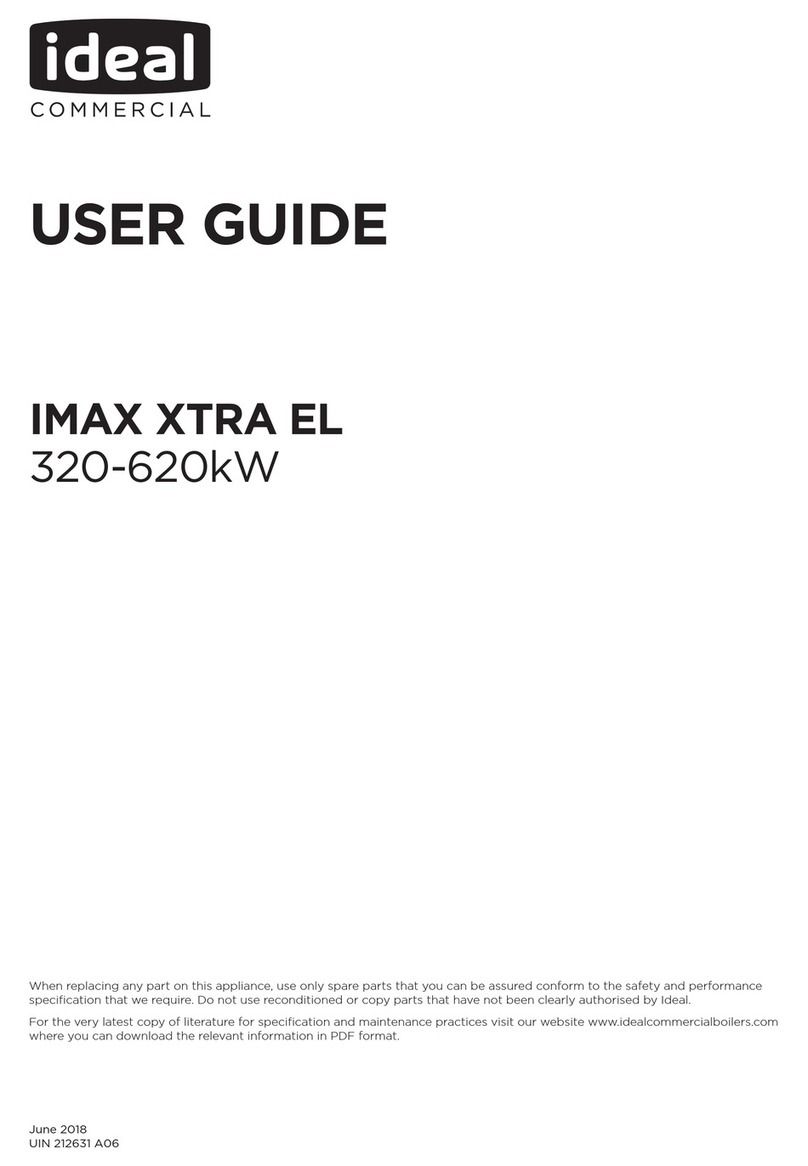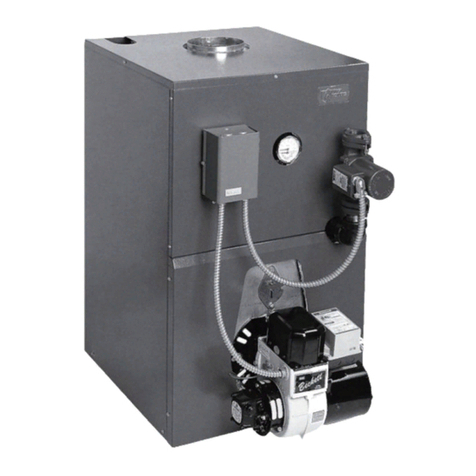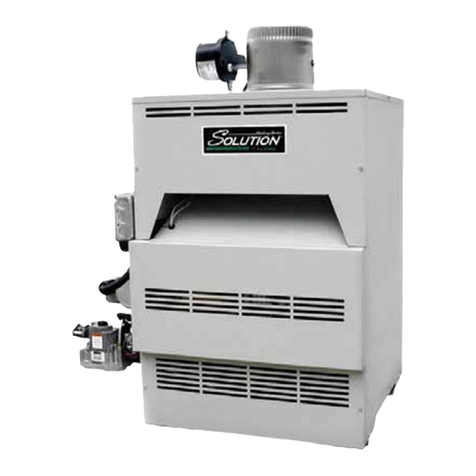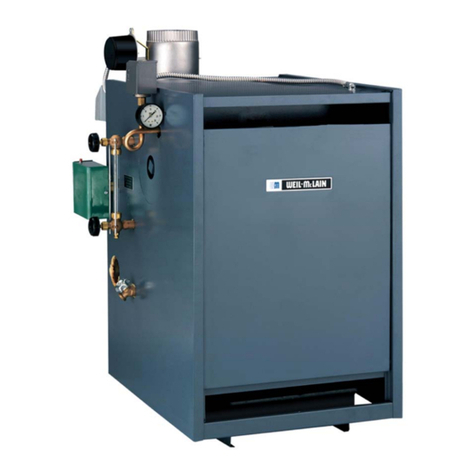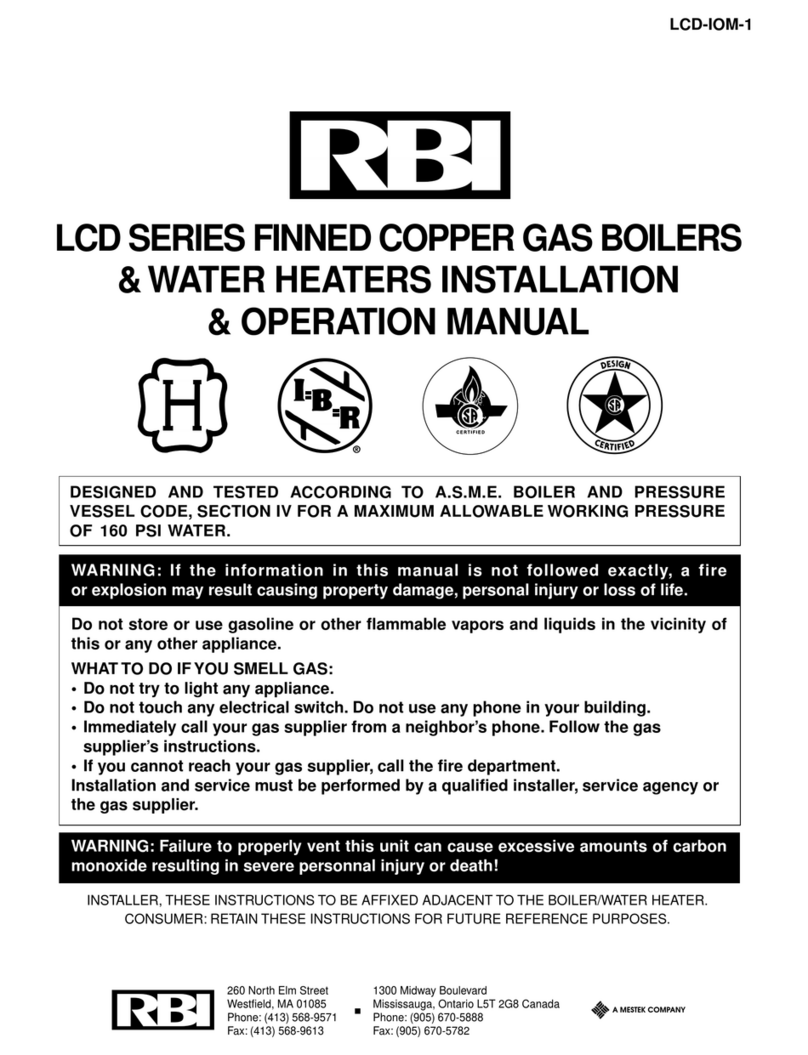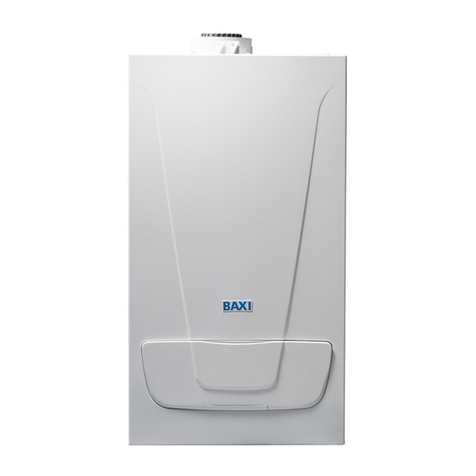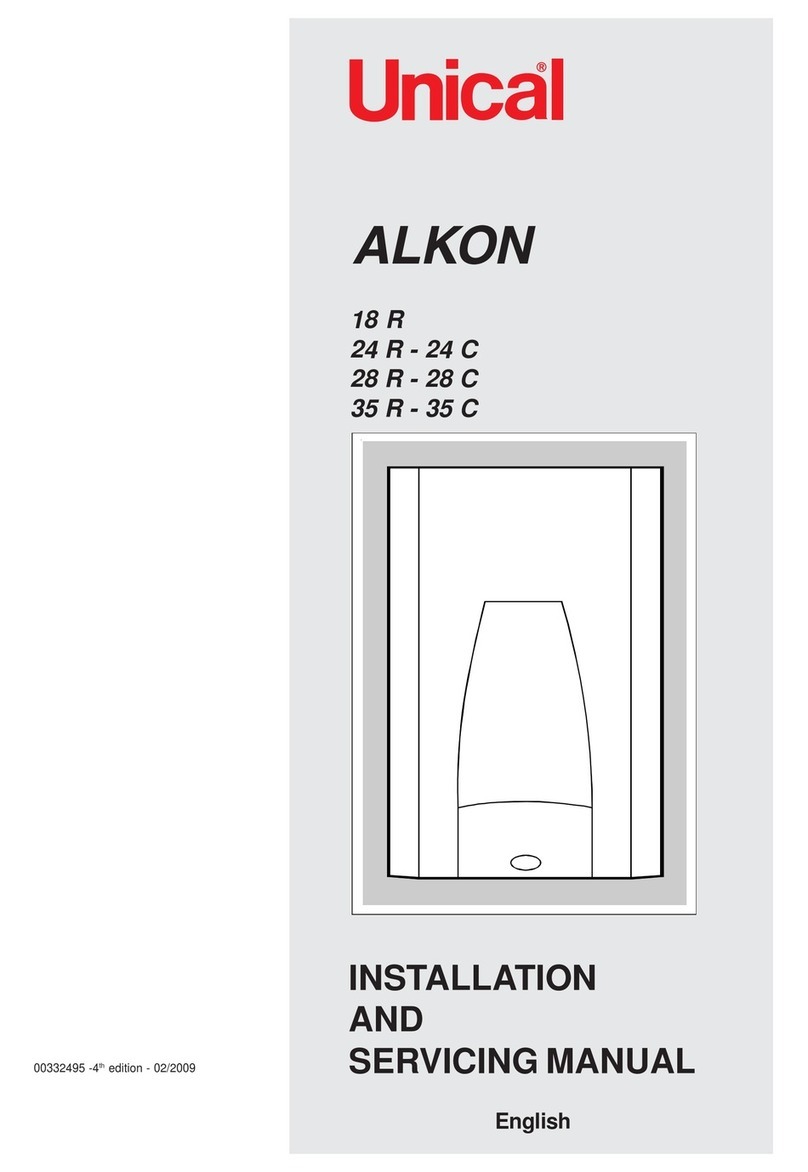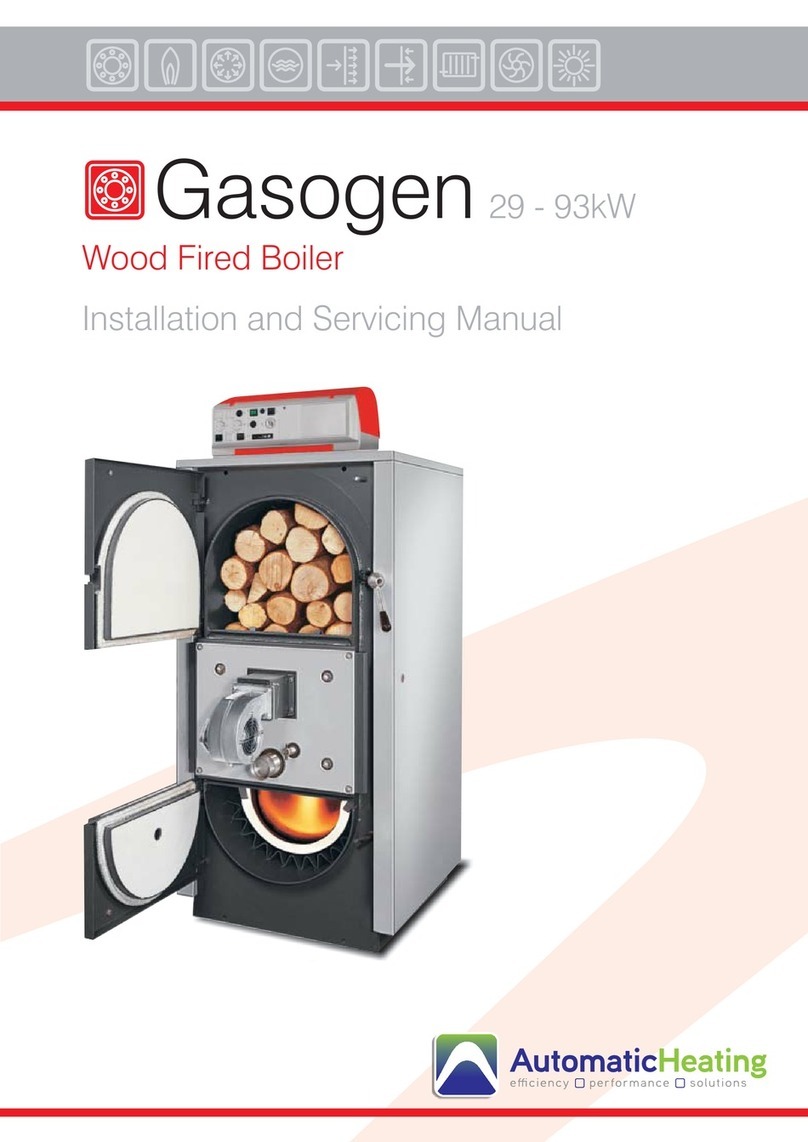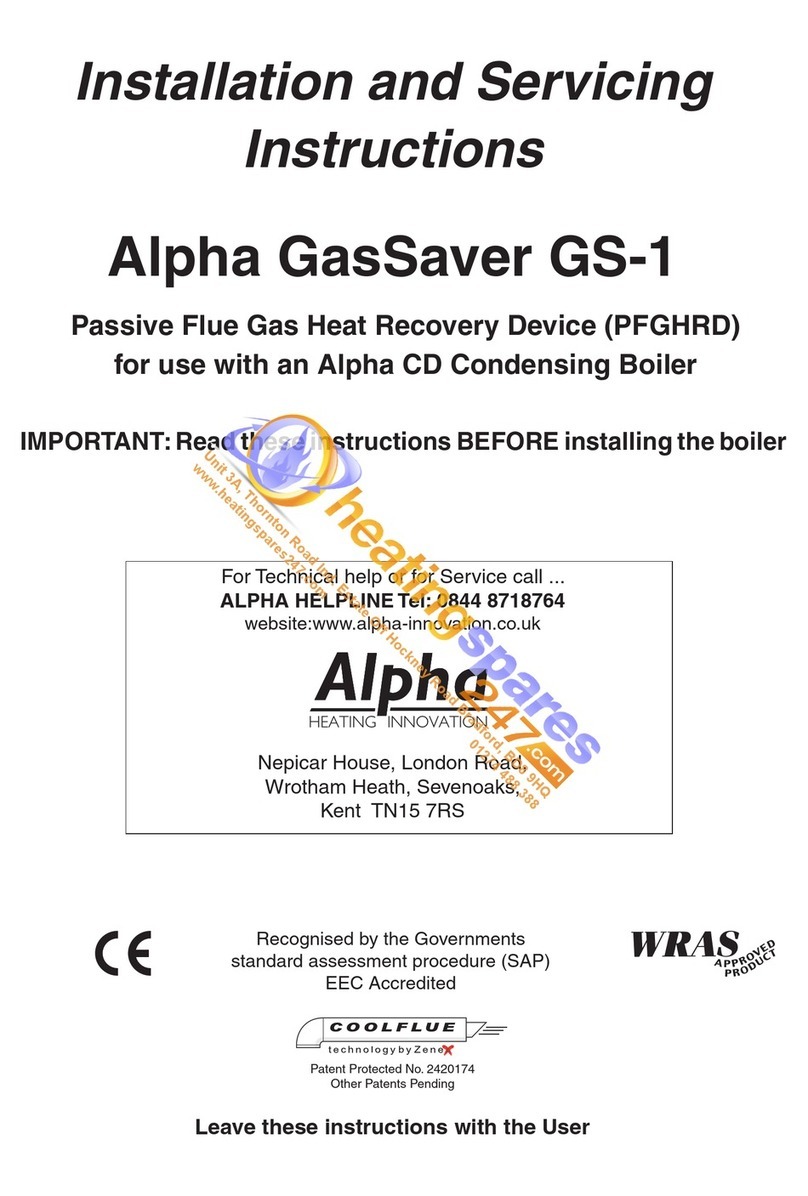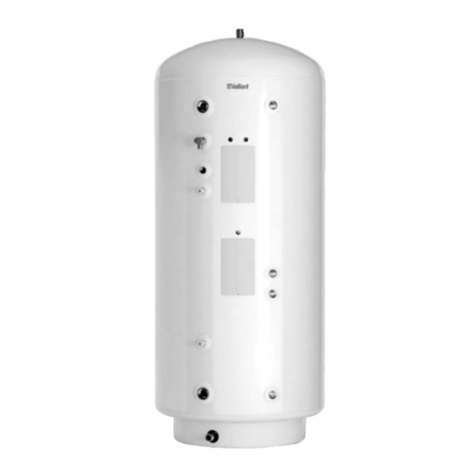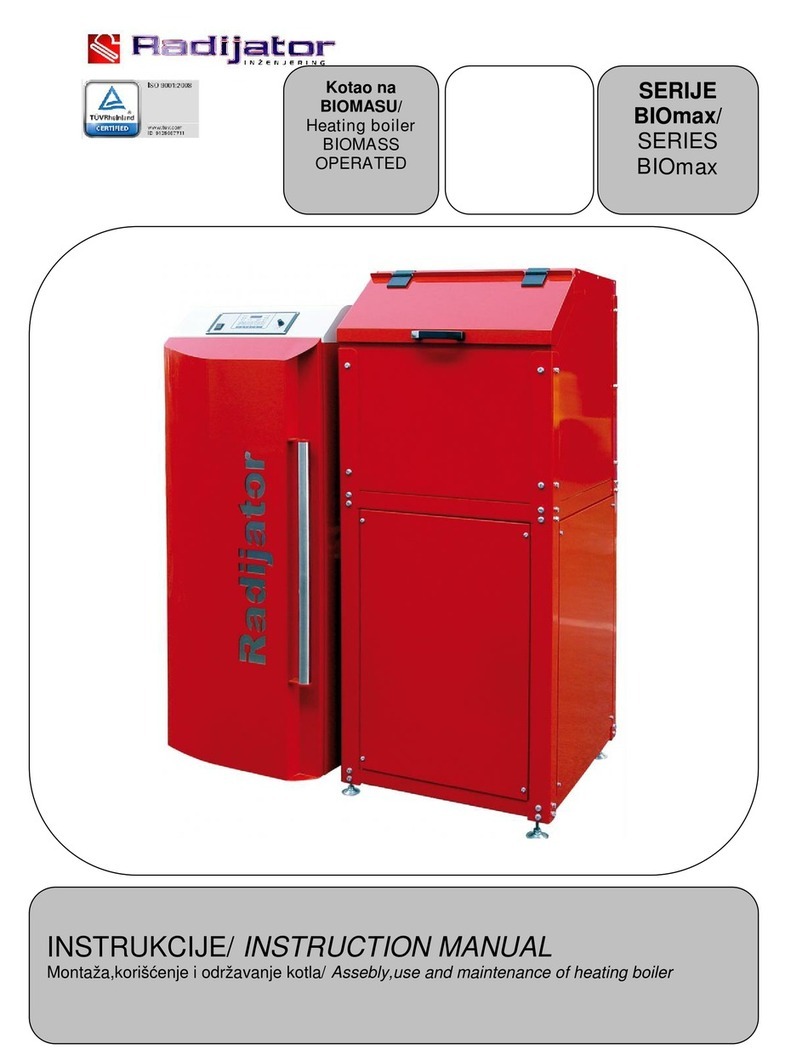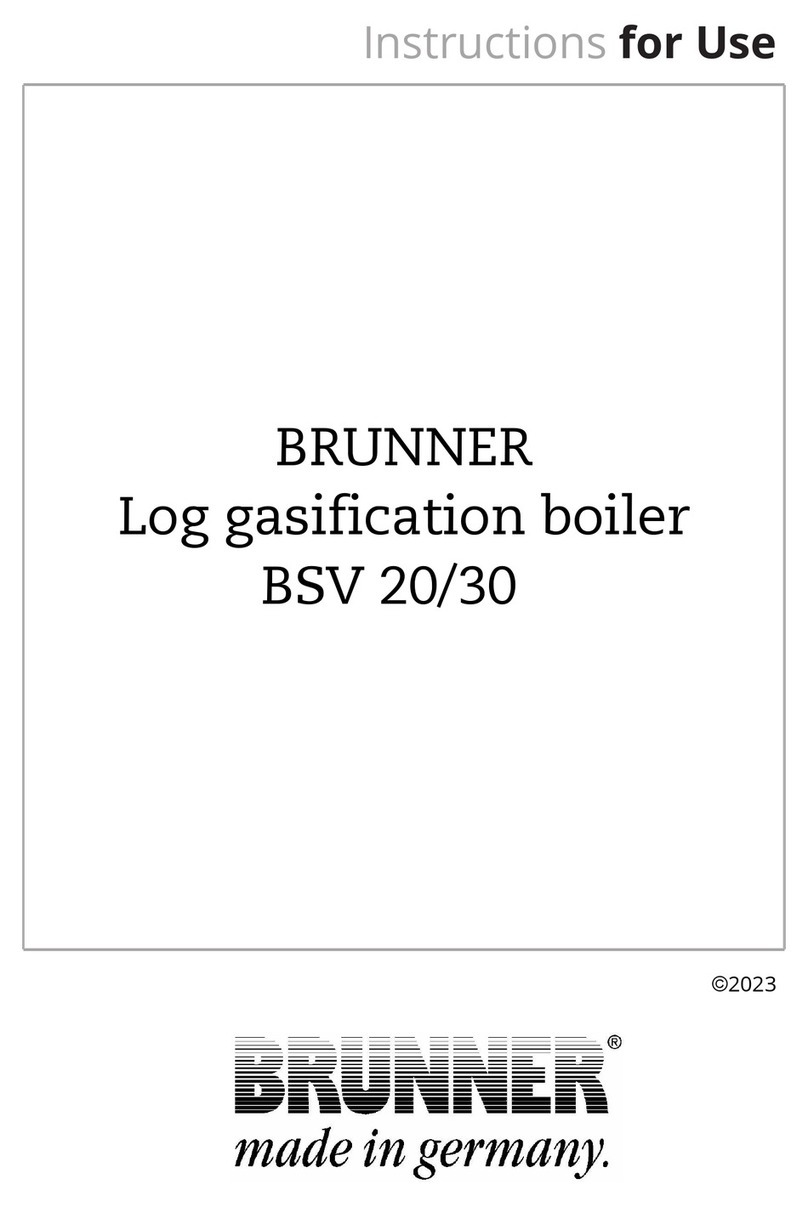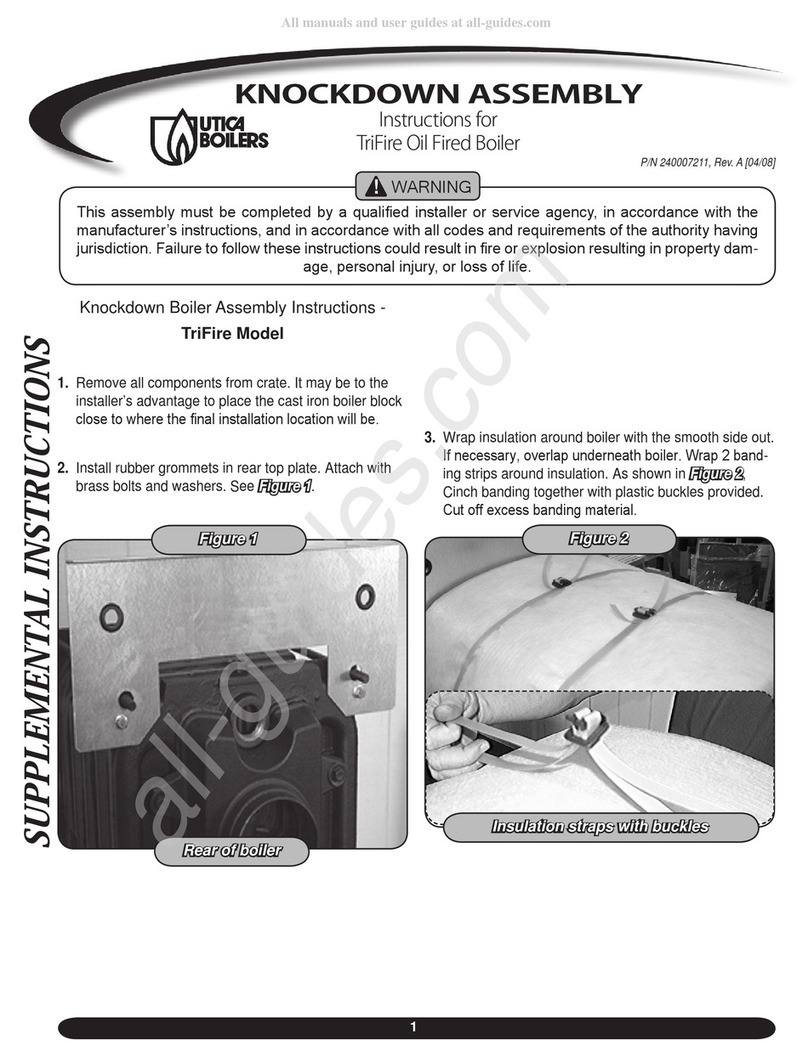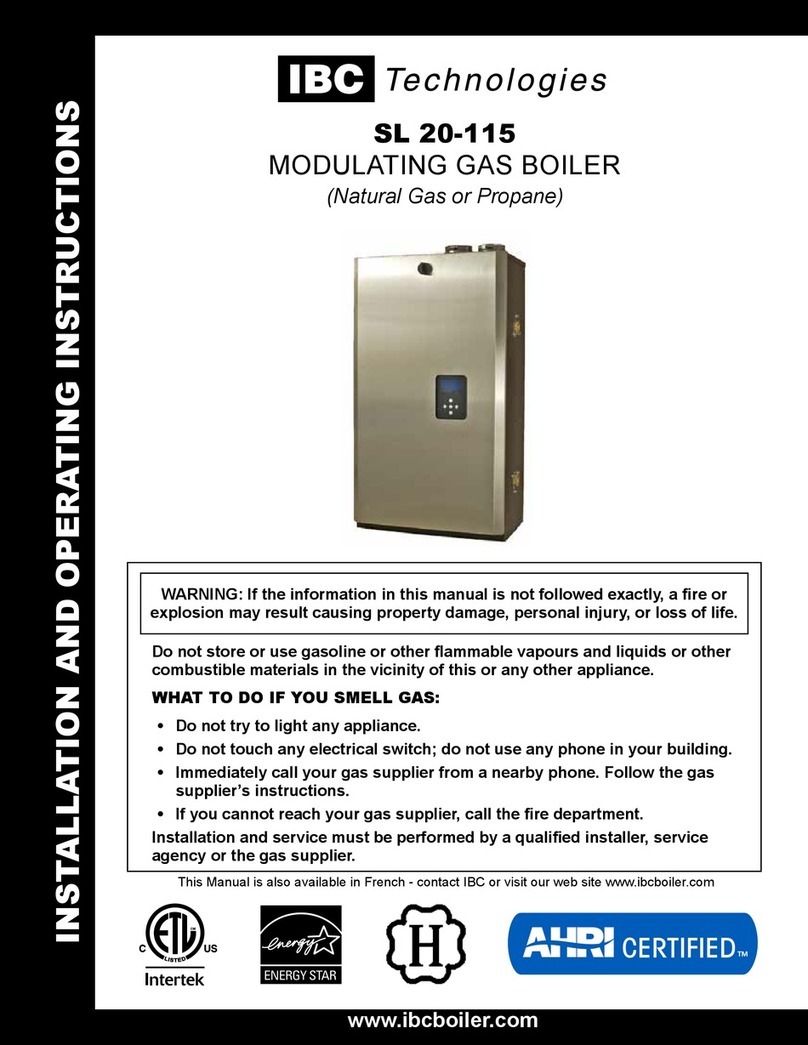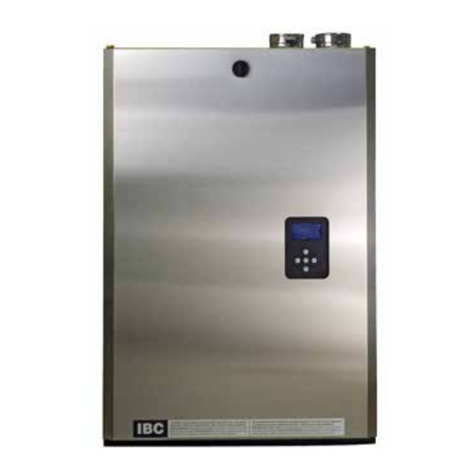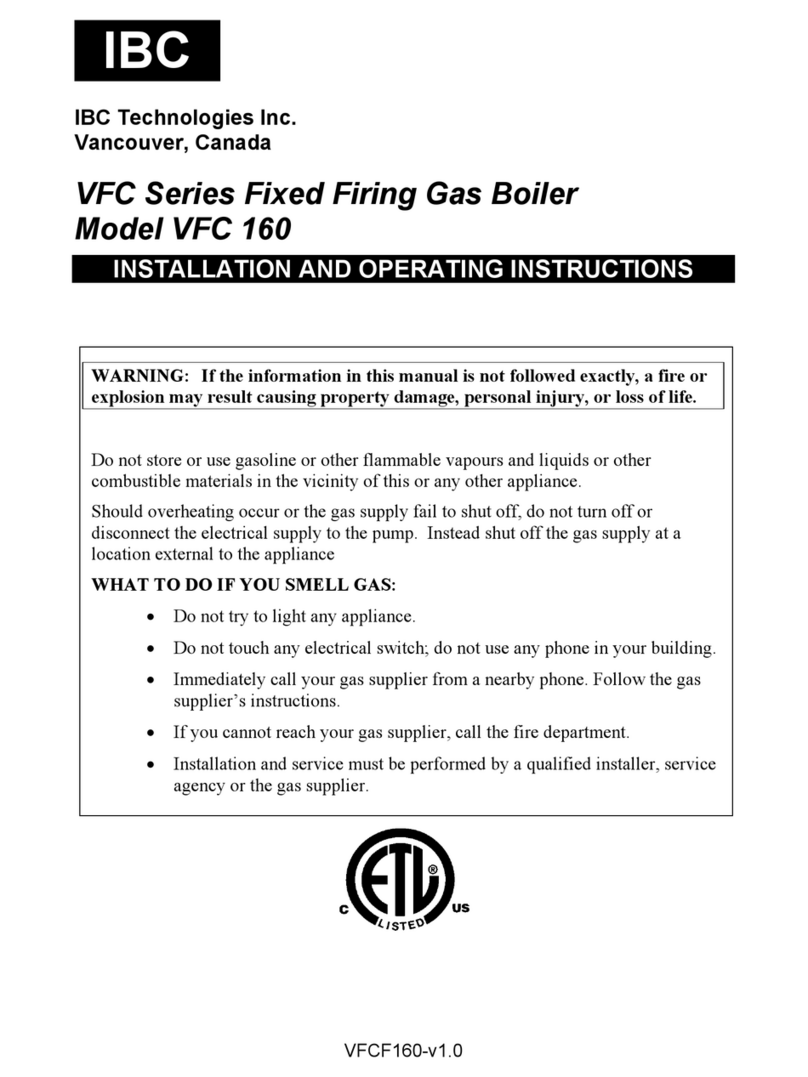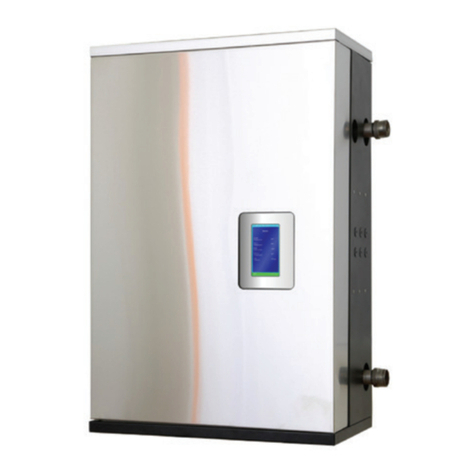
INSTALLATION AND OPERATION INSTRUCTIONS
SL 80-399 MODULATING GAS BOILER
The Installer must carefully read this manual to ensure that all installation
details can be adhered to. Special attention is to be paid to clearances and
access, vent travel and termination, gas supply, condensate removal and
combustion air supply.
The Installer should do a pre-installation check the to ensure that the
following precautions can be observed:
• The boiler should be installed in areas where the combustion air source is
not subject to chemical fouling or agricultural vapours. Exposure to corrosive
chemicalfumessuchaschlorinatedand/oruorinatedhydrocarbonscan
reduce the life of a boiler. Cleaners, bleaches, air fresheners, refrigerants,
aerosolpropellants,dry-cleaninguids,de-greasersandpaint-removersall
contain vapours which can form corrosive acid compounds when burned in a
gasame.Airbornechloridessuchasthosereleasedwiththeuseoflaundry
detergents are also to be avoided.
• The boiler should be located where water leakage will not result in damage
to the area. If a location such as this cannot be found, a suitable drain pan
should be installed under the appliance. The boiler is not to be installed above
carpeting.
• At a new construction site, or during renovations, action must be taken to
protect the boiler from drywall dust or other construction related contaminants;
combustion air should be drawn from a CLEAN source (e.g. outdoors) and the
boiler should be isolated from interior dust sources. Do not seal boiler case
openingsdirectlywhenring-allowforaircirculationandventilationinthe
immediate area.
• When the boiler is in operation, the impact of the steam plume normally
experienced at the exhaust terminal of a condensing boiler should be
assessed. Generally, intake and exhaust pipes should terminate at a rooftop
or sterile wall location. Boiler condensate is corrosive. Protective measures
must be taken to prevent corrosion damage to metal roofs or other metal
building components in contact with the condensate. Keep exhaust plumes
well away from all building air intakes including those of neighbouring
properties.
• The exhaust outlet should be placed so as to reach 24” minimum above the
down-turned intake - to avoid exhaust re-ingestion.
• For sidewall venting options: Both the inlet and exhaust terminations should
normally be located on the same plane (side) of the building. The elevation of
both pipes can be raised in “periscope style” after passing through the wall to
gain required clearance above grade and snow level.
• If the indoor combustion air option is used, ensure combustion air openings to
the boiler room remain unblocked and free of obstructions.
• Examine the condensate outlet to ensure proper disposal of condensate will
occur during operation. If condensates are to be discharged into building drain
piping materials that are subject to corrosion, a neutralization package must
be used.
• Ensure that the pressure relief valve will be installed with no valves or other
means of isolation between its inlet and the boiler. Make sure the relief valve
outlet will be piped with unobstructed piping (minimum 3/4” diameter) to a safe
discharge location.
WARNING
Do not use this boiler if any
part has been under water.
Immediately call a qualied
service technician to inspect
the boiler and to replace any
part of the control system and
any gas control that has been
under water.
DANGER
Should overheating occur
or the gas supply fails to
shut off, do not turn off or
disconnect the electrical
supply to the pump. Instead
shut off the gas supply at
a location external to the
appliance
